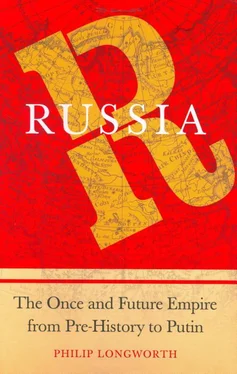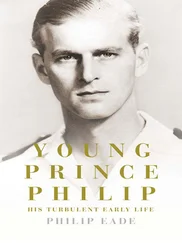In doing so they created a magic realm for children and for us, conjuring up a world of forest sprites which appear as wolves, bears or even whirlwinds; of girls called rusalki, water-spirits that float on streams or lakes decked out in wreaths and garlands like live Ophelias; of tree- and spring-spirits; of wild animals which talk, and water-demons who are the spirits of people who died by drowning and who, by beckoning watchers on the bank, cause more young men to drown. And, the most powerful and fundamental of them all, Perun the Thunder God, bringer of rain, fertility and hence prosperity. 21
This magic world of early Russia was not only to inspire literature and the theatre; it also helped form the Russian national character itself. However charmingly presented, these tales reflect an essential realism rooted in the land of Russia and in all the peculiarities of that land. They acknowledge both nature’s bounty and the price in hard labour and risk that nature often demanded for it. They recognize the dangerous streaks of unpredictability both in weather and in humankind; and they teach the importance of going with nature, not against it.
But though the original, isolated, magic Russia was to leave its imprint on the people, it was not to survive the impact of the outside world. As those caches of Islamic coins demonstrate, the outside world had discovered Russia even as early as the 6oos. From then on commercial pressures were to play an important role in moulding Russia’s development. And the first such important influence seems to have been the Khazars.
Starting in the seventh to eighth century, the Khazars formed a commercial state. With their capital first at Itil on the Volga (not far from the present-day city of Tsaritsyn, once Stalingrad), and later at Sarkel on the river Don, Khazar warriors commanded all the routes between Russia, Central Asia, Persia and the eastern Mediterranean. They both taxed and protected all the trade that passed through. In this period the Roman Empire was in decline, the Arab Empire on the rise. At the same time Russia was becoming more important as a European trade route, now that the Mediterranean was no longer the safe Roman lake it had been. The Khazars found themselves poised between two worlds aside from the pagan Russians — the world of Christendom and the world of Islam. The two worlds were locked in combat, yet Khazar prosperity depended on trade with both. In order, therefore, to preserve their ideological integrity and discourage missionaries from both Christian Byzantium and the Muslim Caliphate (Ummayad and later Abbasid), the Khazar elite chose to become Jews. The fact that Jewish traders were among the most enterprising and well connected in the wider commercial world was another reason for this apparently eccentric decision. And the decision proved sound.
The Khazars made subjects of the Russian tribal confederations known as the Poliane, Severiane and Krivichie, requiring each household to pay them a silver coin and a squirrel pelt each year. They exacted tolls on Russian traders passing through their territory, developed their own system of weights and measures, minted their own coins, and provided other models that were to serve the first Russian state (or kaganate). Thanks to Khazar influence and protection, Russian merchants were soon ranging as far afield as Baghdad. A contemporary Arab writer, Ibn Khurdadhbih, reported in a geographical handbook for merchants he wrote around the 840s that Russians were taking black-fox pelts, beaver furs and swords from the north lands to the Black Sea, paying tolls there to Byzantium. They also went through Sarkel in Khazar territory to the Caspian, and sometimes they brought their goods thence ‘by camel… to Baghdad, where Slavic eunuchs serve as interpreters for them’. 22But these Russian traders in the south brought with them swords that had been forged in the north by a quite different people, the Vikings.
The Vikings — sometimes referred to as Varangians or Norsemen — acted as a commercial catalyst for the Russian tribes in the north just as the Khazars did for those in the south. They lived by trade and plunder. Active in the Baltic, they had come into contact with the Finns and Slavs of northwest Russia. From them they learned about the river routes to other Slav communities far to the south and to the Khazars’ territory beyond. Through forays into the Mediterranean they already knew that the Khazars held the gateway to the riches of both the Orient and the Mediterranean world. It was in order to capture some of this trade that they decided to build a base at Ladoga, and then another close to what was to become the city of Novgorod.
This was a bleak region with very poor soil and very sparse settlement, inhabited by Finno-Ugrian fishermen, themselves not very long established, and by a few Russians who had come in later. It was here that the classic trading city was developed. The Vikings who made a base at the site now known as Old Ladoga in the 750s were trader-warriors dealing in furs, beads and blood. They built a fort there to protect themselves, their craftsmen and their wares. Archaeologists who have carefully investigated the remains of the settlement have found and dated wickerwork walls and conclude that the building of such a fort required labour in the form of slaves. The Vikings either brought these with them or found them locally. But if there was an initial labour shortage, it did not last long.
Once the fort was in existence people came from afar to marvel and to sell fish or other food or a few pelts gathered in the forests, and so an emporium of sorts arose, which became something of a magnet for Slavs migrating from the south. 23But the Viking settlers were interested in more than petty local trade. Their eyes were set on the long-distance trade in more valuable commodities — honey, weapons and above all slaves to trade in Byzantine markets for the silks, spices and precious stone of the Orient. It is likely that, in time, traders came from as far afield as the Caucasus and Caspian.
The archaeologists’ finds are puzzling, because they comprise the remains of not one settlement but two. Like the first scraps of information found in the Latin and Arabic sources of the period, these have been seized on by scholars, who like few things better than a good dispute. The result has been a sizeable literature on the origins of towns in Russia, and an impressive variety of theories. Did towns develop from tribal centres or from fortified strong-points? Or were they created from scratch because of a sudden need? Were they formed by nobles, or by traders and artisans? The consensus seems to be that most of these elements played a part. Still, the fact that Novgorod boasted two such settlements within a mile or so of each other by the river Volkhov is intriguing, and excavations at Kiev and Smolensk have revealed that these cities also grew from two distinct but associated settlements. Perhaps the two settlements had different functions. At any rate ‘Riurik’s town’ or hill settlement (gorodishche in Russian, or holmgarthr in Scandinavian), sited close to the point where the river Volkhov flows out of Lake Ilmen, was much the more important of the two. Twenty-five acres in area, Riurik’s town was the more easily defensible site and stood clear of the spring floodwaters (which persuaded an Arab visitor that it was in fact an island in the river). 24
If the cities of the Russian south originated as tribal headquarters and agricultural centres, the city of Novgorod owed its origins to trade and was associated with the Vikings. The Vikings had been trained in a hard school. They knew that they must expand their trade, their settlements and their conquests or perish. And they represented the commercial world at its most ruthless and greedy. ‘Even the man who has only modest wealth,’ remarked the tenth-century Arab writer Ibn Rusta, ‘is…envied by his brother, who would not hesitate to do away with him in order to steal it.’ 25Their intelligence system was well developed. They had learned of the Khazars and of the Russians who were taking their cue as traders from them. And they had soon found their way to both.
Читать дальше





![Stephan Orth - Behind Putin's Curtain - Friendships and Misadventures Inside Russia [aka Couchsurfing in Russia]](/books/415210/stephan-orth-behind-putin-s-curtain-friendships-a-thumb.webp)





